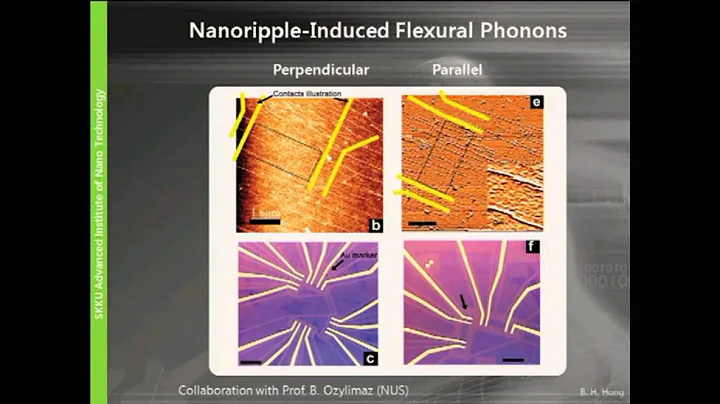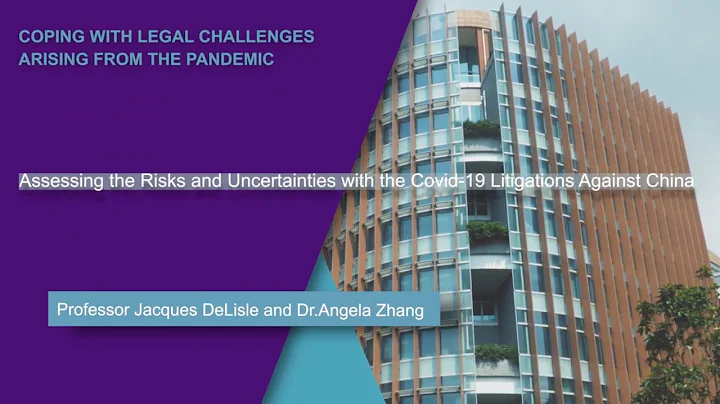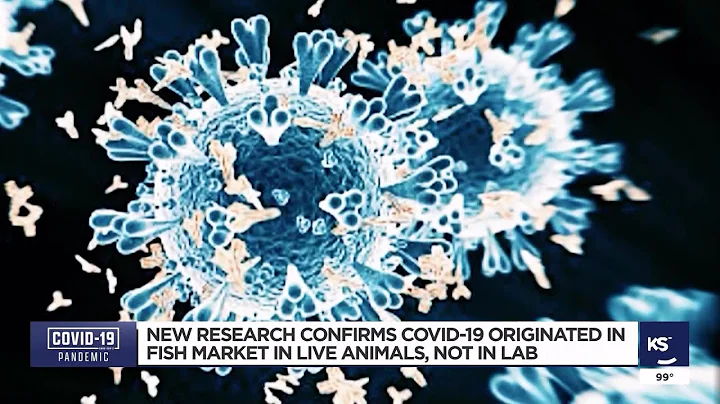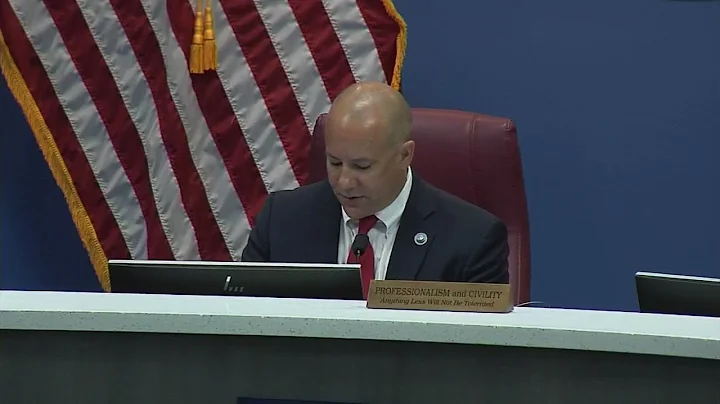Recently, Xi'an Jiaotong University scientific researchers have made important progress in the fields of organic optoelectronic materials, wearable medical sensing, COVID-19 patient treatment, polymer materials and other fields. Let's take a look at these new breakthroughs and results!
At the beginning of the new year
Xi'an Jiaotong University has strong momentum of scientific research and innovation
Let us continue to call for the scientific research strength of Jiaotong University!

Xi'an Jiaotong University researchers
have made important progress in the field of bismuth-containing viologen
published in the journal
"Journal of the American Chemical Society"
( Journal of the American Chemical Society)
Content summary

Recently, the research group of Professor He Gang from the Frontier Institute of Xi'an Jiaotong University made the first The bismuth element (Bi) was introduced into the viologen skeleton, and bismuth-containing viologen derivatives were successfully prepared and named "Bismoviologens". Thanks to this design, the prepared bismuth-containing viologen has the following advantages: (1) The molecule has a good planar rigid structure, thereby increasing the degree of conjugation, red-shifting the absorption, and reducing the energy gap; (2) The heavy weight of the bismuth atom Atomic effects can promote intersystem crossing of molecules, thereby stabilizing the triplet excited state and producing phosphorescent properties. This also makes bismuth-containing viologen the first viologen derivative with phosphorescent properties. In addition, a series of subsequent tests such as electrochromism, CV, and electrochemical spectroscopy have shown that bismuth-containing viologen exhibits phosphorescent properties while still retaining the inherent redox properties of viologen compounds.
Based on these properties, bismuth-containing viologen has been successfully used in electrophosphorescent color devices and visible light-induced cross-dehydrogenation coupling reactions. This research not only greatly expanded the scope of viologen derivatives, but also laid a solid foundation for the application of such materials in the fields of phosphorescent optoelectronic devices and visible light catalysis.
Author of the article
Ma Wenqiang, a doctoral student at the Frontier Institute of Xi'an Jiaotong University, is the first author of this paper. Professor Ma Tianyu from the Institute of Frontier Sciences, researcher Rao Bin from the School of Chemistry, Professor Zhang Mingming from the School of Materials, and Xu Letian, Zhang Sikun, and Li Guoping from the research group of Professor He Gang participated in this work. Xi'an Jiaotong University is the only corresponding author of this article . This is another important breakthrough for Professor He Gang's research group in the field of viologens containing main group elements.
Paper link
https://pubs.acs.org/doi/10.1021/jacs.0c12015

Xi'an Jiaotong University researchers are working in the field of engineered hydrogel
Wearable medical sensing Made important progress
published in the journal
"Advanced Functional Materials"
( Advanced Functional Materials)
Content summary

Flexible wearable electronic devices can be directly attached to the skin surface to achieve in-situ, real-time and continuous monitoring of human physiological information, and have extremely promising application prospects in the field of personalized medicine. Recently, the team of Academician Jiang Zhuangde and Professor Zhao Libo of Xi'an Jiaotong University and the research team of Professor Ali Khademhosseini of the University of California, Los Angeles, explored for the first time the feasibility of gelatin methacryloyl (GelMA) for the development of flexible tactile devices. , developed a highly sensitive, transparent, skin-conformable, and fully solution-processable flexible wearable tactile sensor based on GelMA, realizing wearable medical applications on the human body. The GelMA flexible sensor can withstand more than 3,500 cycles of pressure, maintain stable measurement performance within 72 hours, and can achieve low-cost, large-area preparation, bringing new hope for the engineering application of hydrogel flexible sensors. .
This hydrogel flexible tactile sensor adopts the capacitance detection principle, uses GelMA as the dielectric elastomer, and realizes human physiological signal detection through pressure sensing.The researchers proposed a fully solution-processable capacitive pressure sensing structure that uses GelMA as the core dielectric elastomer and controls water evaporation by placing an auxiliary bonding layer (such as a PDMS layer) on both sides of it. By chemically treating the surface of the auxiliary bonding layer and using ultraviolet light irradiation to achieve chemical bonding with GelMA, the robustness and durability of the device structure can be enhanced. Using spin coating, UV irradiation, surface chemical treatment and other processes, a low-cost, large-area preparation technology with complete solution processing was developed. The structural design strategy and preparation technology are universal and can be used to develop other hydrogel flexible tactile sensors. In addition, since the GelMA dielectric elastomer, PEDOT:PSS electrode, auxiliary bonding and base layer are all transparent materials, the entire device has good light transmittance, which is of great significance to the development of invisible wearable electronics .
Author of the article
Associate Professor Li Zhikang of the School of Mechanical Engineering of Xi'an Jiaotong University is the first author of the paper. Professor Zhao Libo of the School of Mechanical Engineering of Xi'an Jiaotong University, Assistant Professor Zhang Shiming of the University of Hong Kong and Professor Ali Khademhosseini of the University of California, Los Angeles are the co-corresponding authors. In addition, Luo Guoxi, associate professor of the School of Mechanical Engineering of Xi'an Jiaotong University, Liu Hao, assistant professor of the School of Life Sciences, and Xue Yumeng, a doctoral student of the Institute of Frontier Sciences, participated in this work.
Paper link
https://onlinelibrary.wiley.com/doi/10.1002/adfm.202003601

Researchers at Xi'an Jiaotong University developed the world's most "bright" white light organic electronics
Luminescent diodes
Published in journals
Nano Energy
Content summary

Compared to white light The power efficiency of LEDs, white organic electroluminescent diodes (WOLEDs) is still low, which limits the solid-state lighting applications of WOLEDs to a certain extent. Among them, the plasma mode energy loss caused by metal electrodes in WOLEDs greatly hinders the improvement of light extraction efficiency, thus limiting the further improvement of the efficiency of WOLEDs.
Recently, the group of Professor Wu Chaoxin of Xi'an Jiaotong University studied an inversion bottom-emitting WOLEDs device structure based on an ultra-thick organic multi-heterojunction hole transport layer, which simultaneously achieved efficient hole injection and plasma modes. Suppression of energy loss. On this basis and combined with conventional external light extraction technology, in an ultra-thick inversion device with a hole transport layer thickness of 240 nm, a peak forward power efficiency of 228.4 lm/W was achieved. Compared with the hole transport layer For devices with a thickness of 60 nm, the power efficiency increased by 57%. At the same time, at a brightness of 1000cd m-2, a peak forward power efficiency of 166.3 lm/W was achieved. This result was certified by the third-party Suzhou Nano Research Institute Testing and Analysis Center of the Chinese Academy of Sciences as 165 lm/W, and was the highest international record , is the world’s “brightest” white light organic electroluminescent diode .
The author of the article
The first author of the paper is Dr. Yu Yue. Professor Wu Chaoxin, Associate Professor Jiao Bo and Suzhou University Professor Feng Minqiang are the co-corresponding authors. Xi'an Jiaotong University is the first author and the first corresponding author.
Paper link
https://doi.org/10.1016/j.nanoen.2020.105660

The team of the First Affiliated Hospital ECMO wrote an article in the sub-issue of the European Heart Journal
to share the critically ill new coronavirus Patient treatment experience
Published in the journal
"European Heart Journal" Sub-journal "European Heart Journal - Cases"
Content summary

At the beginning of 2020, in order to save the life of a critical COVID-19 patient, The First Affiliated Hospital of Xi'an Jiaotong University established a special treatment team composed of more than 50 people to treat patients 24 hours a day. Implement treatment. After 94 days of hard work, the patient met the discharge criteria on May 9.As the king of extracorporeal circulation and the last line of defense in emergency and critical care, extracorporeal membrane oxygenation (ECMO) played an important role in the treatment of this patient. In order to rescue this patient, ECMO was operated for 49 days. According to literature reports, this was also the longest record of ECMO time among recovered and discharged COVID-19 patients at home and abroad at that time.
Recently, the ECMO team of the Cardiovascular Surgery Department of the First Affiliated Hospital published for the first time its experience in the use of ECMO in the treatment of critically ill COVID-19 patients in the well-known cardiovascular journal "European Heart Journal - Cases", titled "Recovery" "from respiratory failure after 49-day ECMO support in a critically ill patient with COVID-19: case report", focusing on the timing of ECMO initiation during the patient's rescue process, complications and treatment strategies after ECMO initiation, and ECMO weaning The timing and subsequent rehabilitation treatment were elaborated in detail, especially the multidisciplinary collaboration experience of the First Affiliated Hospital and the twice-daily consultation system during the ECMO treatment process. During the diagnosis and treatment of this critically ill patient, the multidisciplinary team focused on discussing the treatment plan twice a day, including ECMO rotation, use of antiviral drugs and antibiotics, and infusion management. Through this multidisciplinary collaborative diagnosis and treatment model, patients are guaranteed to receive standardized and individualized treatment.
Author of the article
The corresponding authors of the paper are Professor Yan Yang and Professor Shi Tao, leaders of the ECMO team of the First Affiliated Hospital of Xi'an Jiaotong University. The first author is the attending physician Guo Fengwei, a key member of the ECMO team. The authors of the paper also include the attending physician Deng Chao, a member of the First Affiliated Hospital's anti-epidemic team. born.

Researchers from Xi'an Jiaotong University discovered the +1-valent calcium ion two-dimensional crystal under natural conditions and discovered the strange properties of this type of material.
Published in the journal
"National Science Review" 0 Content summary
Recently, Based on cryo-transmission electron microscopy technology, scientific researchers from Xi'an Jiaotong University directly observed two-dimensional CaCl crystals generated in a natural environment on a reduced graphene oxide (rGO) film, in which the valence state of calcium ions is +1. Relevant theories and experiments also show that these two-dimensional CaCl crystals have room-temperature ferromagnetism, metallicity, and piezoelectric-like properties, can form graphene-CaCl heterojunctions, and have significant hydrogen storage and hydrogen release capabilities.

High-resolution real-space cryo-electron microscopy structural characterization diagram (i), selected area diffraction (ii) and Fourier transform diagram (iii) of the real-space structural image of the two-dimensional CaCl crystal show that the two-dimensional CaCl crystal has twice the properties of graphene size unit cell structure.
Theoretical studies show that the formation of this abnormal crystal is due to the strong cation -π interaction between the aromatic rings on the graphene surface and calcium ions. Since other metal ions (such as Mg2+, Fe2+, Co2+, Cu2+, Cd2+, Cr2+ and Pb2+) also have strong cation-π interactions with the graphite surface, preliminary research shows that other metal cations will also form similar abnormal valence crystals.

Stable two-dimensional CaCl crystal structure based on experimental data and first-principles calculations
Such two-dimensional CaCl crystals exhibit metallicity and also show obvious piezoelectric-like properties. This unexpected piezoelectric-like behavior comes from two aspects: the monovalent behavior of Ca ions, and the different electrical effects of the two elements (Ca and Cl) under compressive or tensile strain. Therefore, the two-dimensional CaCl crystal is a new type of material with both metallic and piezoelectric properties. It can be expected to prepare electronic devices with atomic scale and nanoscale, thus creating a wide range of applications.

Resistance measurements of rGO and GO films confirmed the metallic properties of CaCl crystals

Under natural conditions, the films showed obvious piezoelectric-like properties under the action of compressive and tensile stress generated by bending
It is worth emphasizing that CaCl crystals behave This discovery breaks the common belief that main group metal elements do not have room temperature ferromagnetism. Theoretical calculations show that this room temperature ferromagnetism also comes from two aspects: unpaired valence electrons in +1-valent Ca ions, and the edge or defect effects of the corresponding abnormal two-dimensional crystal structure. It is therefore expected that other metallic elements may also possess room-temperature ferromagnetism by forming similar anomalous two-dimensional crystals.

The room temperature (300K) hysteresis loop of CaCl@rGO film shows that it has significant room temperature ferromagnetism
The strange properties and behavior of this type of two-dimensional crystal will also expand the application of functionalized graphene. Furthermore, given the widespread distribution of metal cations and carbon on Earth, this nanoscale "special" compound with previously unrecognized properties may be widespread in nature.
These discoveries have not only made breakthrough progress in the study of two-dimensional crystals with unusual anion-cation ratios, novel cation valence states and strange electromagnetic properties, but also have implications in materials, biology, chemistry and physics. Groundbreaking application potential.
The author of the article
The author of the paper is a team of professors Zhang Lei, Zhang Peng and Zhang Shengli from the School of Physics of Xi'an Jiaotong University, together with relevant teams from Shanghai University, East China University of Science and Technology , Shanghai Institute of Applied Physics, Chinese Academy of Sciences, Zhejiang Agriculture and Forestry University, East China Normal University and Xiamen University .
Paper link
https://doi.org/10.1093/nsr/nwaa274

Xi'an Jiaotong University researchers used borate ester chemistry to develop sustainable polymer materials with practical value
Published in journals
"Journal of the American Chemical Society"
content Abstract

Dynamic covalent bonds are a type of covalent bonds that can reversibly "break" and "recombine" when triggered by external conditions (such as heat, pH, light and catalysts, etc.). Based on the "breaking" and "reorganization" of dynamic covalent bonds, cross-linked polymers can achieve reprocessing and repair of polymer materials through topological structure evolution at the molecular level. As a typical dynamic covalent bond, borate groups are widely used to develop repairable and renewable polymer materials. However, researchers have been troubled by the problem that boronic acid ester groups are too sensitive to water or alcohol.
In order to solve the problem that borate ester groups are too sensitive to water or alcohol, Professor Jing Xinli’s research group at the School of Chemistry, Xi’an Jiaotong University proposed a strategy to use boron nitrogen internal coordination to improve the stability of borate ester groups, by synthesizing boron nitrogen with a clear structure Internally coordinated cyclic boronic acid diester (NCB)-based small molecule model compounds were studied in depth, and their exchange reaction kinetics and thermodynamics under thermal or media triggering were studied in depth. On the basis of fully understanding the NCB-based dynamic covalent chemistry, this highly stable boron-containing hybrid dynamic covalent bond structure was introduced into the polymer cross-linked network, and NCB-based Vitrimers were synthesized. Vitrimers based on NCB not only have the excellent medium stability and mechanical properties of traditional thermosetting polymers, but also can achieve material repair, reshaping and recycling through NCB-based correlation exchange reactions. In particular, compared to ordinary borate-based cross-linked polymers, NCB-based vitrimers have higher water and thermal stability. This research work provides a new chemical strategy and concepts for designing sustainable materials with practical value.
Author of the article
Doctoral candidates Zhang Xiaoting and Associate Professor Wang Shujuan of the School of Chemistry of Xi'an Jiaotong University are the co-first authors of the paper, and Professor Jing Xinli of the School of Chemistry is the corresponding author of the paper.The characterization and testing in the paper were supported by the Analysis and Testing Sharing Center of Xi'an Jiaotong University, the Analysis and Testing Platform of the School of Chemistry, and the Analysis and Testing Center of Northwest University.
Paper link
https://dx.doi.org/10.1021/jacs.0c10244

Xi'an Jiaotong University researchers proposed a new strategy of photothermal and photodynamic synergistic treatment of tumors to reduce tumor recurrence rate
Published in journals
《ACS Nano》
Content summary

Tumor activity Schematic diagram of feedback treatment strategy
As we all know, most of the late recurrence of tumors is caused by the failure to completely eliminate tumor cells during early treatment. The limited penetration depth of nanomedicines within the tumor and the severe hypoxia within the tumor significantly reduce the efficacy of PTT/PDT synergistic therapy (PDT therapy requires the support of oxygen).
Recently, Professor Wu Daocheng's research group at the Institute of Biomedical Imaging and Applications, School of Life, Xi'an Jiaotong University, proposed a new PTT/PDT synergistic treatment strategy for tumors, which has made significant progress in reducing tumor recurrence rates. This study uses polydopamine (PDA) with good biocompatibility as a carrier to simultaneously load hemoglobin (Hb provides oxygen) and photosensitizer (Ce6) to construct small-sized nanoparticles, and then wrap the small particles into acid-sensitive PEG-PEI In the micelles, the surface is re-modified with hyaluronic acid (HA) that can target tumors and becomes a highly penetrating, acid-sensitive releasing composite PTT/PDT synergistic treatment nanocarrier. As shown in the figure, due to the acidic environment of the tumor, the nanosystem releases small-sized polydopamine particles with deep penetrating ability at the tumor site and penetrates into various parts of the tumor. Under light conditions, polydopamine photothermal therapy and Ce6 release reactive oxygen species Photodynamic force synergistically kills tumors. The amount of oxygen released by hemoglobin is adjusted according to tumor activity. The higher the tumor activity, the stronger the acidity. The more oxygen released by hemoglobin, the higher the intensity of PDT treatment, and vice versa. This feedback treatment strategy that adjusts treatment intensity according to tumor activity allows PTT/PDT collaborative therapy to achieve maximum efficacy in each active area of the tumor. Tumor tissue is eliminated more cleanly, while the toxic and side effects on normal tissue are extremely low. In vivo anti-tumor experiments show that this method not only inhibits tumors by more than 98%, but also has a 60-day tumor recurrence rate in mice of only 8.3%.
The author of the article
The first author is Wang Ya, a doctoral student in the School of Life Sciences of Xi'an Jiaotong University. Professor Wu Daocheng is the only corresponding author. The School of Life Sciences of Xi'an Jiaotong University is the first and only corresponding author unit of the paper. This work was funded by the National Natural Science Foundation of China and the National Major Scientific Instruments and Equipment Project. The Analysis and Testing Center of Xi'an Jiaotong University provided a large amount of test characterization support for this work.
Paper link
https://pubs.acs.org/doi/10.1021/acsnano.0c06415

"Produced by the Party Committee Propaganda Department"
Content source / Jiaotong University News Network
Editor in charge / Chang Shuai Cui Kejia





















